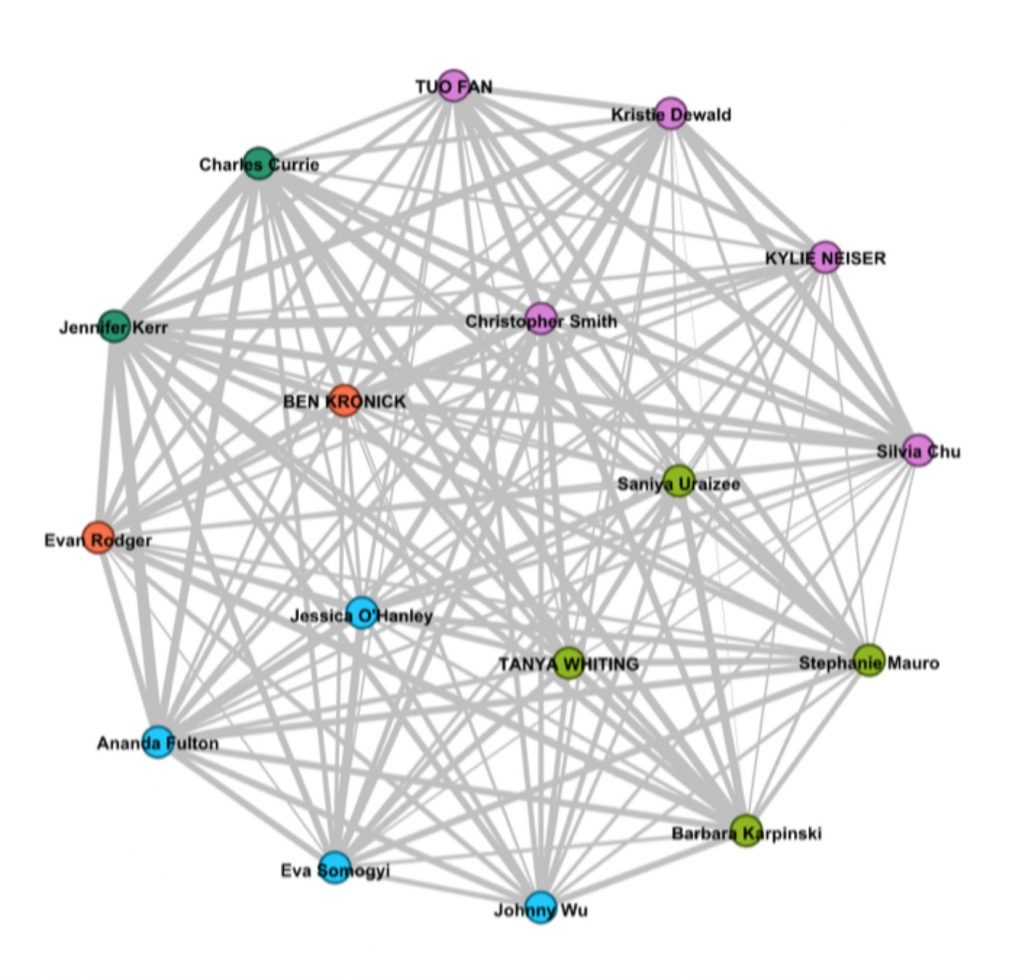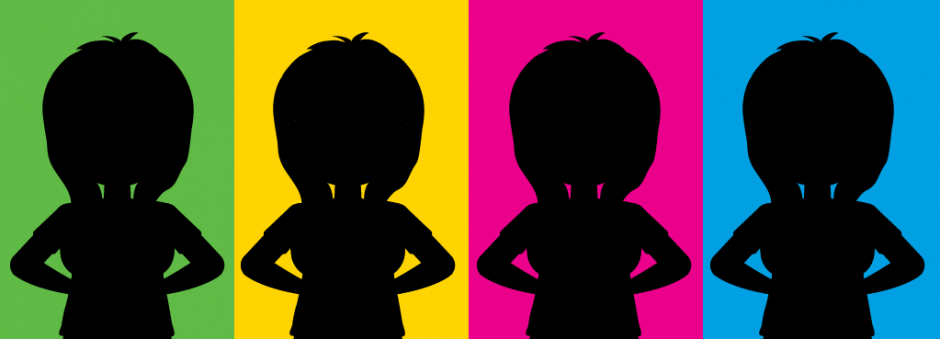Kristie Dewald > Task 1: What’s in your bag?
Kristie’s post on the first task caught my attention because she also carries a traditional notepad with her. She gave me the impression that she tries to keep some of the old school traditions, like myself. For example, the traditional notepad and printed book. She mentions that she prefers to write down notes and organize her thoughts. I myself carry a daily planner that I also use as a journal to organize my ideas and thoughts. Like most of my peers she carries a computer with her, in my case I carry an iPad. Similarly, like most of us, she does her work using an electronic device.
Another item that was eye-catching was the calculator. The first questions that I had was: why does she need to use a calculator when she has a cellphone and a computer. These items should be more “powerful ” that the calculator. I actually looked at the picture first before going through the post. She is an accountant. That could be a reason for her having a calculator on the side. Or is it that she likes to work with old school items?
As Kristie puts it “there is a whole lot of entertainment and distraction in there too!” Our new devices that facilitates our work also distract us. While searching for information on the internet or grading my students homework (electronic files), I always end up watching a video o reading something not related with what I was supposed to do. ^_^
Kylie Neiser> Task4: Manual Script
On her hand written journal task she posted three images, I was attracted to her pinky rather than her handwriting. She mentioned that since she is left handed, she would usually smudge what she wrote and her pinky would get smudges. I am not left handed but I have had the same experience. Back in the days when my Chinese teacher would make us copy text books so as to practice Chinese characters writing, I would have the same issue.
- In Chinese writing is from right to left.
- Chinese writing can also be from top to bottom and from left to right.
Similarly to Kylie, I rarely manually write in Chinese or English. I rely too much on my digital devices. Sometimes when writing manually in Chinese I need to double check with my cellphone if the character I wrote is the correct one.
I agree with her that even though typing is faster, handwriting is a skill that should not be lost. Just a thought, maybe years later… I wonder if younger generations would say: Why do we need to learn how to hand write if it is a skill that people no longer use? Scary… but is not it part of the technology effect and how it has affected us?
Task4: Potato Printing
This was one of my favorite tasks. When I first read the task, my first thought was: Huh? These days who really writes with pen and paper? I am an exception, I am old-school. The other option was potato printing. I actually was preparing to work with the potatoes but by the time I got home it was part of diner already.
I was curious, I wanted to know who picked the potato assignment. I went through each of my peers’ blog because I wanted to see who had chosen to do the potato printing. Jess O’hanley(need to scroll down to task 4), Kylie Neiser, Victoria Ramsey, Eva Somogyi and Tuo Fan chose to do the potato printing. Out of the cohort of 20, only 5 of us decided to do it. In their post, they share the process, the experience and reflection of carving and working with the potato.
Kylie Neiser’s potato task was different because unlike the other peers she decided to do it letter by letter. Her method of doing this task reminds me reminds me of woodblock printing. I was surprised that she took only 30 minutes to finish the job. Having done a stamp for each letter gives the printer the chance to reuse it and produce other words. She has B A S I L. There other other words that can be formed with these letters, such as: Lisa, Bail, Sail, Basis, bliss.
This process makes me appreciate the art of printing. Unfortunately, this type of printing is no longer being used (for books). Unless, we talk about art. We live in a transition era where technology facilitates us our work in many aspects. Eva’s comments made me reflect much on how people like us ” transitioners” (word I just invented to classify those who have gone from old school to new school).
I am so glad to be living in an age where we can so easily create, standardize, copy, and transmit writing with such ease. If I lived in an age where stamps were used to write – I would be illiterate. It may be that I am used to our ease in writing,
Technology has made our life easier. We save time and costs. However, is this really positive? Of course no matter if writing by hand or carving the potato, most of us say that it was hard because we have not done it for a long time. However, how should we determine if a skill is no longer needed in this world? Can you imagine a generation where people only use voice commands and do not even know the art of skill of writing (computer or by hand).
Charles Currie > Task7: Mode Bending
The reason I chose to link Charle’s Bending-Mode task, is because both of us produced a collection of sounds of the items items we carry in our bag. He notes that the track is a representation of this typical workday. It was not clear what his profession is. Although it gave me an idea on what he might do.
While listening to Charle’s track it seemed that he takes his audience to work. I enjoyed the track, the sounds made by each item have been smoothly connected. He definitely knows how to edit sounds. In this track, there is the sounds of joining online meetings. With these two clues, I am guessing that he is computer savvy. Therefore his job must be communications and computer related.
Both of us focused on displaying our items through sounds but it reflected a different side of each other. In my case, it was slightly different that his. He has kept it strictly professional, while I believe that the piece I produced also reflects part of my personality.
Nicky Krastel > Task8: Golden Record Curation
In this case, Nicky and I concurred in several aspects. Nicky, like myself, next to each song we selected we also provided a short explanation of why we chose that piece. We both chose the same six tracks. We might have chosen the same tracks, but the reason that we have provided for selecting these might differ. It is interesting to see that in this aspect we might have some commonality but at the time we might differ.
Nicky mentions on her post
A quote from Timothy on the Podcast really resonate with me, “music means a lot to us and I would be surprised if something like music didn’t mean a lot to at least some other intelligent species. The fact that it is non-specific and yet communicates something to everyone.”
I believe that music, like visual arts, can be interpreted in different ways depending on each individual’s perspective. As it it in this case of curating the Golden Records tracks.
For example, we both have chose the Alima song. She has chosen it because it portrays the indigenous perspective and culture. I chose to include this song because it includes the sounds that one could hear in the rainforest. It is the representation of our planet’s vegetation, which has not been destroyed by man so far.
This specific assignment has made me reflect on the reasons behind our choices and how we need to visit other peers’ pages to understand their perspectives on the task.
Evan Rodger> Task 9: Network Assignment Using Golden Record Curation Quiz Data

We had three images that were generated from the Golden Record Duration Quiz. I was part of the Magenta group, the largest one. Among the magenta peers we had several tracks in common.
I decided to pick Evan’s (orange group) because the data displayed seemed that we were completely opposite. Going through Evans Golden Curation List there was not even one track that we had in common. I had expected to at least have one. Looking at image #2, one would thing that there would be a path in common that might link us together.
Our link or commonality is that while curating the list, both of us wanted song to be
Memorable pieces that showcase a worldwide perspective
How come that both of us used the same criteria to curate the same songs and got such different results? Same cohort, same criteria, same profession (both of us are teachers) but completely different results. The big question is why didn’t we even get one track in common? I did mention in my own task 9 that I would have liked to see and image generated with the data on the reasons why each of us picked those specific songs. Even with the same criteria but different reasons might have influenced our selection and it would better explain these opposite results.
